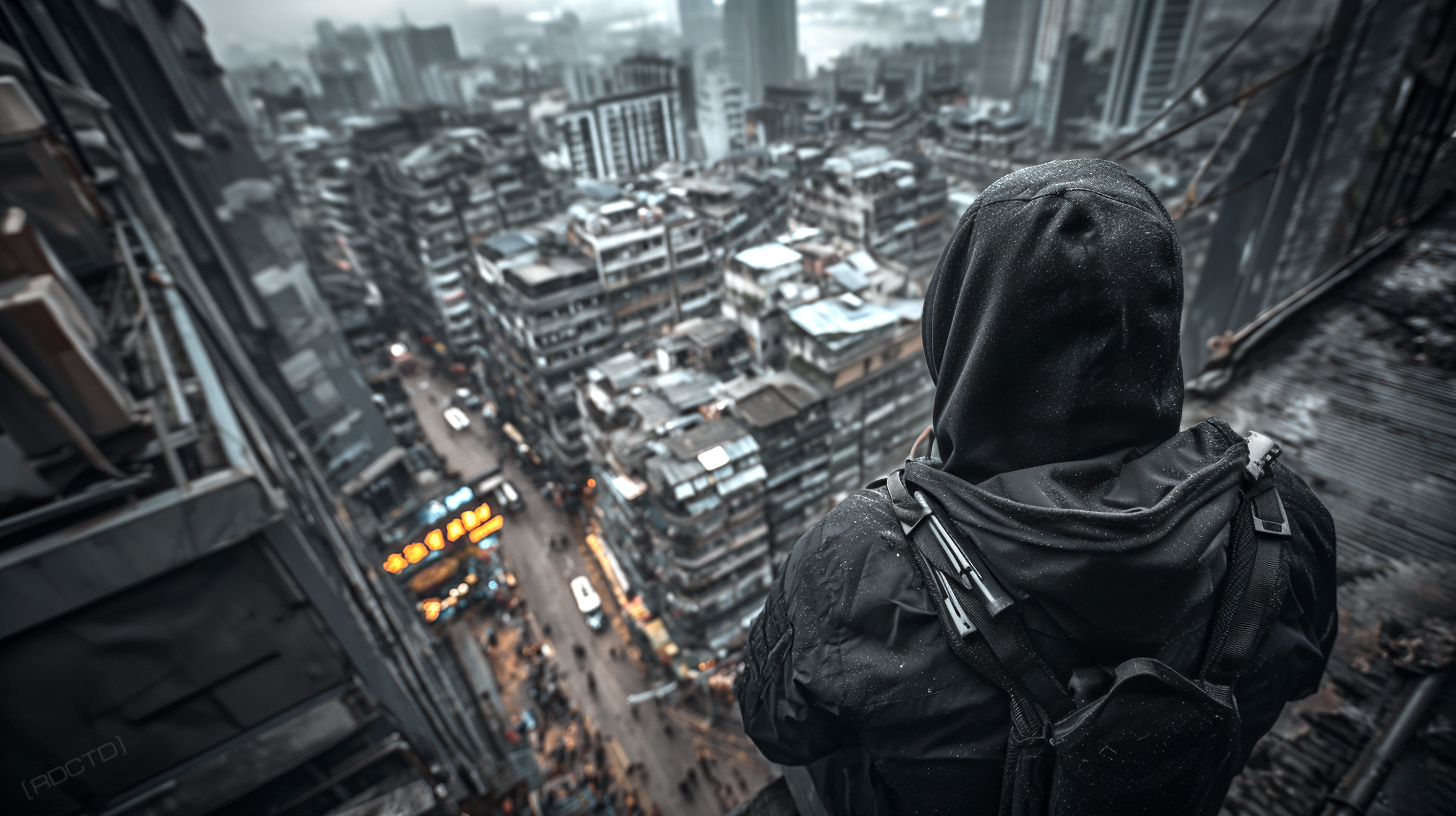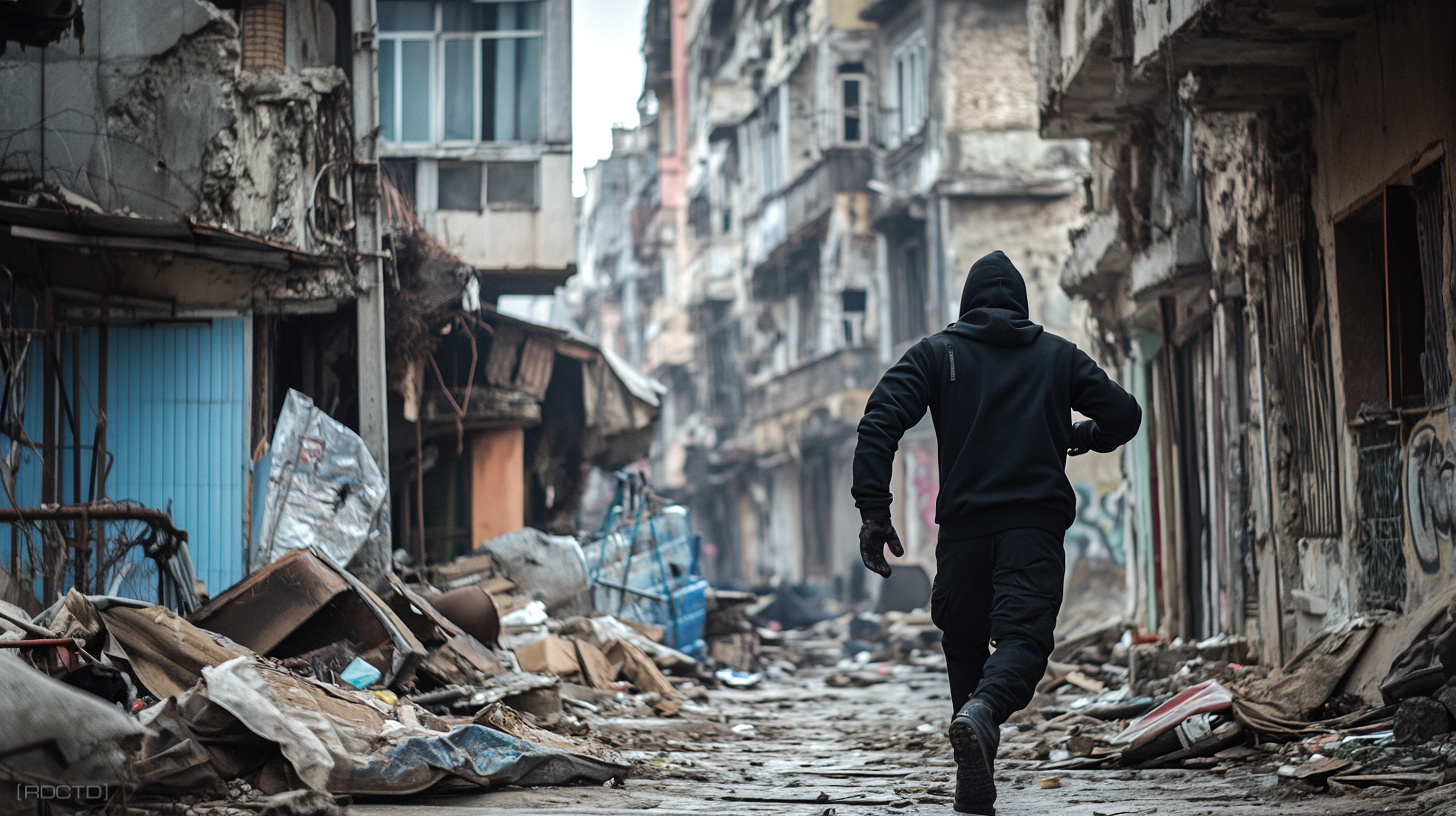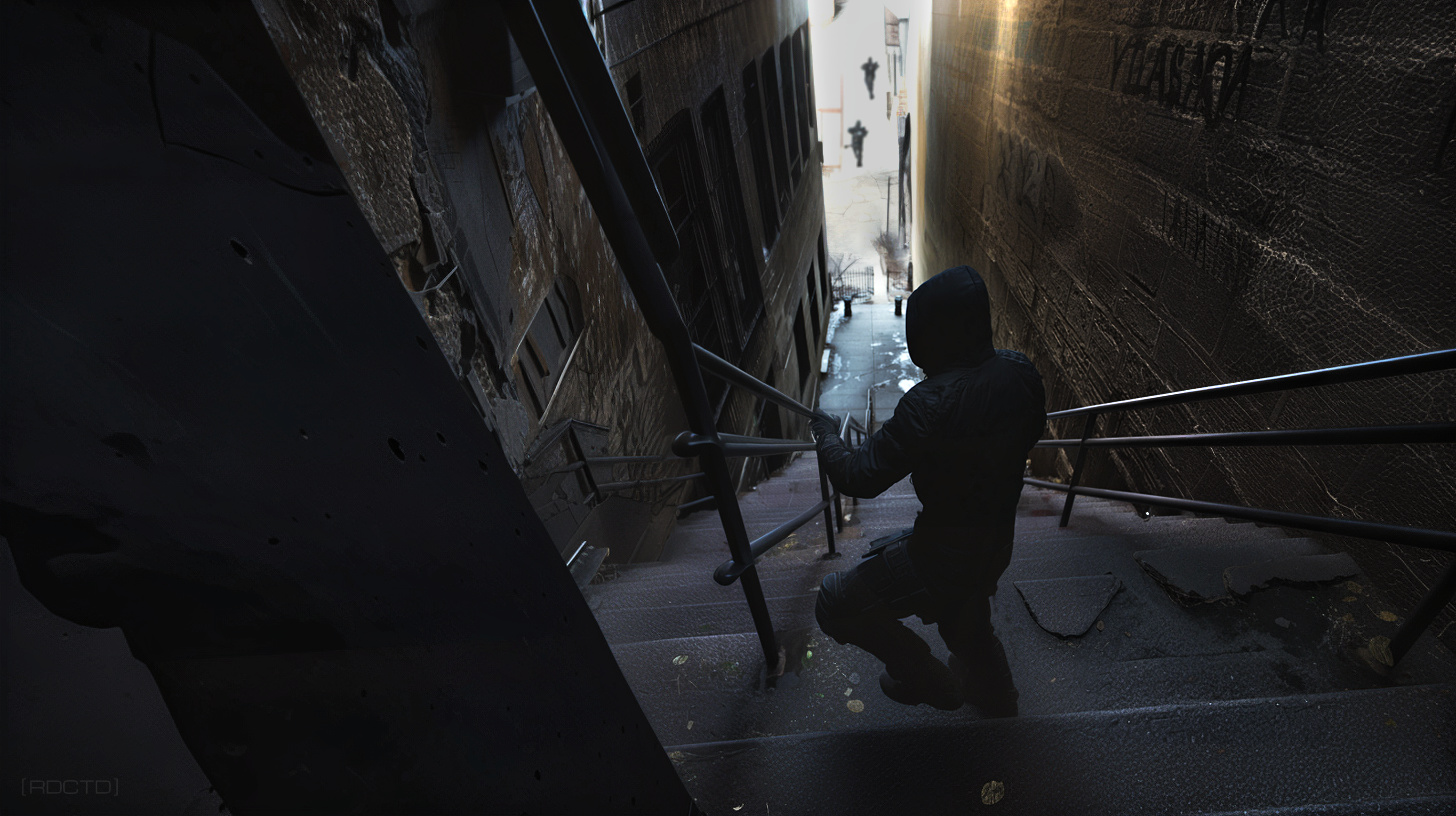 A tradecraft logistics framework where an operative converts city terrain into angles, vectors and cover-planes – doing instant, non-numeric spatial math to route, hide, and navigate with tactical advantage.
A tradecraft logistics framework where an operative converts city terrain into angles, vectors and cover-planes – doing instant, non-numeric spatial math to route, hide, and navigate with tactical advantage. ![]()
Every building face, corner, and corridor hides a line of approach – geometry is simply how you learn to read then adapt them.
![]()
Urban Movement Geometry (UMG) is a logistical way to visualize and interpret urban environments not as random structures, but as interconnected geometric patterns. Every street, alley, wall, and shadow creates angles, vectors, and planes dictate how you can move, hide, and observe. A covert operative doesn’t see “a city block” – they see intersecting lines of sight, deflection angles, choke points, flow corridors, and so on.
The goal isn’t to assign numerical values, but to apply spatial reasoning in real time – quick mental math without numbers. It’s a geometry of movement, enabling you to operate fluidly through complex, layered spaces.
![]()
Always map your movement in arcs, not lines. Arcs give you lateral options under observation, whereas linear movement locks your trajectory and reduces your decision window.
![]()
[ URBAN GEOMETRY ]
![]()
“Geometry” in this sense centers on translating architecture and infrastructure into operational data.
Buildings become vertical cover; intersections form nodes of visibility and decision; parked cars and dumpsters create shifting angles of concealment.
You analyze these features as geometric actual, literal constructs. Walls forming planes, corners forming vertices, streets forming vectors, and that abstraction lets an operative rapidly filter sensory input, spotlighting relevant spatial relationships while discarding distracting detail.
The human flow within this environment is another geometric layer. Situated and moving in semi-predictable arcs influenced by the city’s rhythm.
This mental shorthand is a piece of tradecraft that trains perception to see operational value in otherwise ordinary urban features. Understanding this dynamic geometry allows an operative to plan routes that maximize invisibility and speed while minimizing exposure and predictability.
![]()
Use offset timing to mask directional intent. Pause briefly after turns or transitions so observers can’t extrapolate your vector from your previous motion.
![]()
[ LOGISTICS ]
![]()
Urban Movement Geometry turns movement into structured but streamlined problem-solving.
Instead of memorizing streets you break tasks into spatial phases and reason about relationships.
This means that cover, sightlines, and flow intersect – so your plan survives friction and surprises. This isn’t a checklist of specific tactics and tricks, it’s a mental architecture that lets an operative compress complexity into a few reusable geometric concepts. It also makes you less error-prone.
![]()
Entry Vector
The initial approach into the operational space. Think of it as the direction of travel relative to dominant sightlines and major geometric features. Conceptually it defines your first contact with the environment and frames what information will be most relevant when you arrive.
Transition Plane
The intermediate zone you move through once you’re committed to the approach. It’s the geometric field between cover points or between decision nodes where movement is negotiated and momentum is managed. Mentally mapping this plane helps you predict where bottlenecks, vertical changes, or visual distractions will concentrate.
Pivot Angle
The decision vertex where you change direction, posture, or intent. A corner, intersection, or threshold that forces a tactical choice. Treat it as a geometric hinge – its orientation relative to incoming and outgoing vectors determines how much choice you retain and how visible you’ll be while you decide.
Exit Vector
The planned egress or next phase direction. It completes the geometric sequence and anticipates downstream constraints. Conceiving the exit vector early preserves options and prevents getting trapped by one-way flows or predictable patterns.
Operational Role of The Sequence
Together these elements form a short geometric algorithm: approach, negotiate, decide, depart. Each element is a cognitive slot you can update rapidly when reality changes, without reworking the entire plan.
![]()
![]()
Framed this way, logistics becomes mental geometry. You don’t need maps or numbers (although those obviously help). You need a small library of spatial primitives and the habit of slotting real-world features into them.
For operatives, that means faster adaptation, clearer priorities, and routes that are chosen for their geometric properties. Not just their names, which keeps movement deliberate and resilient even when the city throws you a curve.
![]()
Synchronize with the city’s motion flow. Match your pace to pedestrian currents and vehicle rhythms so your movement blends into predictable urban geometry.
![]()
[ TACTICAL ]
![]()
Urban Movement Geometry defines the line between being a visible target and moving like a ghost.
This goes beyond just picking streets to strategically selecting angles, sightline breaks, and motion corridors that hide intent and preserve options.
An operative thinking in geometry treats the city as a three-dimensional field of tactical affordances. Such as places to approach, places to pause, places to speed, and places to disappear. Then uses those affordances to shape every move so it’s efficient, low-profile, and reversible.
![]()
Angles of Approach
Terrain Masking
Cover-Point Spacing
Curve and Corridor Exploitation
Reflective and Sensory Considerations
Real-Time Spatial Synthesis
![]()
![]()
Read this as tactical grammar: angles, planes, pivots and spacings are the words you use to compose invisible movement. When you practice moving by geometry rather than by street names, your actions become more adaptable.
You stay off the map of others’ attention and retain the freedom to disengage, redirect, or vanish on demand – while on optimized course.
![]()
Convert every building façade into a clock face. It gives you a consistent orientation for describing angles and movement without relying on compass bearings.
![]()
[ NAVIGATION ]
![]()
Rather than only chaining street names in memory you also encode the city as repeatable shapes and movement motifs – an “L-turn corridor,” a “T-junction bottleneck,” a “spiral path through layered cover”…
This way your route becomes a pattern you can re-create under stress. This approach compresses complex routes into a few robust spatial cues that survive distractions, fatigue, and degraded tech. And it’s exactly the kind of strategy an operative relies on when conventional navigation fails.
![]()
Shape-Based Waypoints
Pattern Sequences
Bottleneck and Bypass Cues
Layered-Cover Spirals
Redundancy Nodes
Sensory Anchors
Denied-Environment Heuristics
![]()
![]()
Seen this way, navigation becomes intuitive as pattern recognition and recall. A portable mental map built from shapes and sequences rather than pins on a screen. Which makes movement faster, less error-prone, and far more adaptable in hostile or degraded environments.
Mastering geometric navigation means you can explore, surveil, escape, evade, or exfiltrate with precision even when the tools you trust are gone.
![]()
Every shadow has an expiration time. Calculate how light shifts across planes throughout your route and use temporary concealment accordingly.
![]()
[ COUNTER-TRACKING ]
![]()
This is a concise, geometry-centred primer that explains how different surveillance modalities convert urban movement into detectable signals – for counter-surveillance and counter-tracking purposes.
![]()
Human Observers
Fixed Cameras and Motion Detection
Algorithmic Analytics and Learned Normalcy
Spatial Data Fusion and the Metadata Effect
![]()
![]()
Think of UMG as the mechanism by which city form is translated into signals. Repeated use of the same geometric primitives creates durable records; diverse sensors read different aspects of the same geometry; and analytic layers convert temporal sequences into searchable patterns.
The takeaway for operators is to understand which spatial features tend to create durable, machine-readable traces so that reporting, documentation, or training can minimize unnecessary, repeatable signal-generation.
![]()
Train to visualize angles without looking. The more instinctively you can sense the geometry behind you, the less you need to visually confirm exposure.
![]()
[ FINAL ]
![]()
Urban Movement Geometry is a type of travel that reduces cognitive load through structured spatial intuition. It’s the mental discipline of simplifying chaos into clean lines and usable angles. When practiced, it becomes instinct – your eyes trace arcs and lines of movement subconsciously, your body aligns with cover naturally, and your decisions follow geometric logic seamlessly.
Whether moving tactically through hostile streets or casually navigating an unfamiliar city, the operative who understands urban geometry doesn’t get lost – they flow through the environment, always one angle ahead.
![]()
// Urban geometry is pure tradecraft, the art of turning space into advantage.
![[RDCTD]](https://rdctd.pro/wp-content/uploads/RDCTD-Covert-Operative-Tradecraft-Guide-LOGO-tk.png)
![[RDCTD]](https://rdctd.pro/wp-content/uploads/RDCTD-Covert-Operative-Tradecraft-Guide-LOGO-mobile.png)







